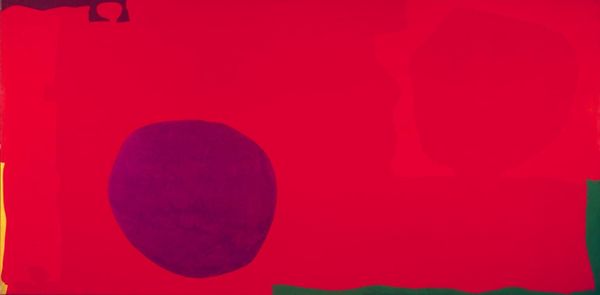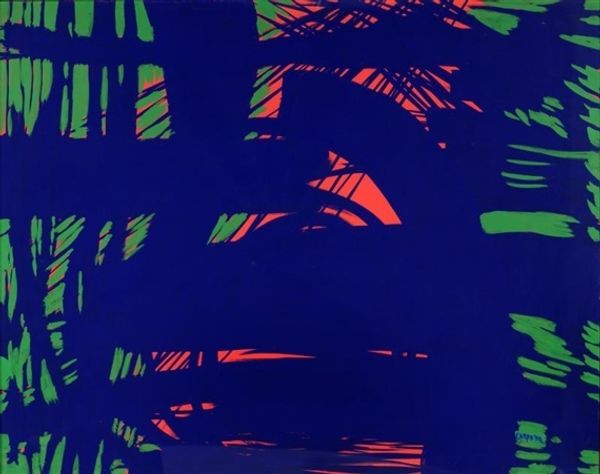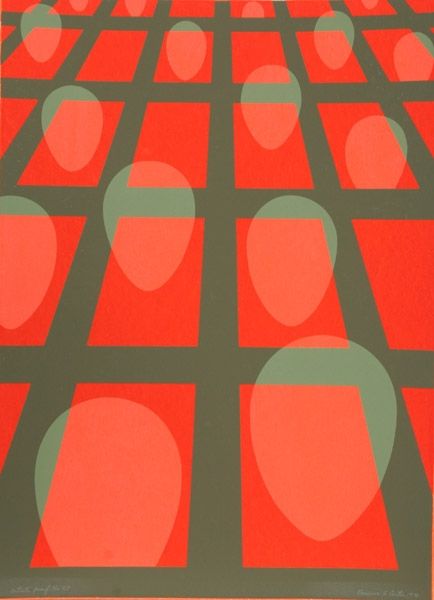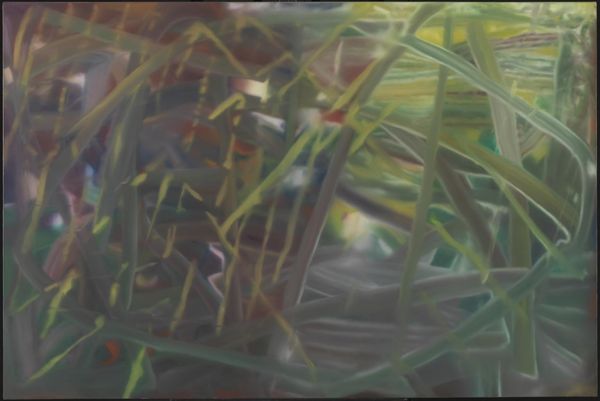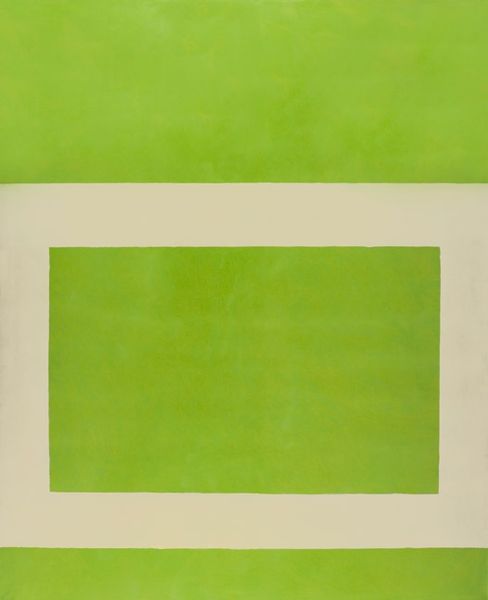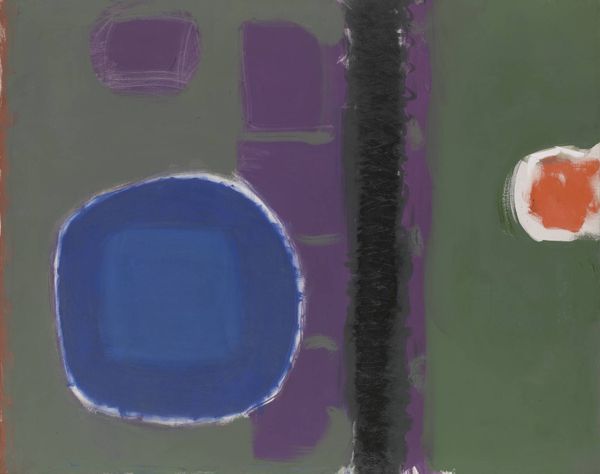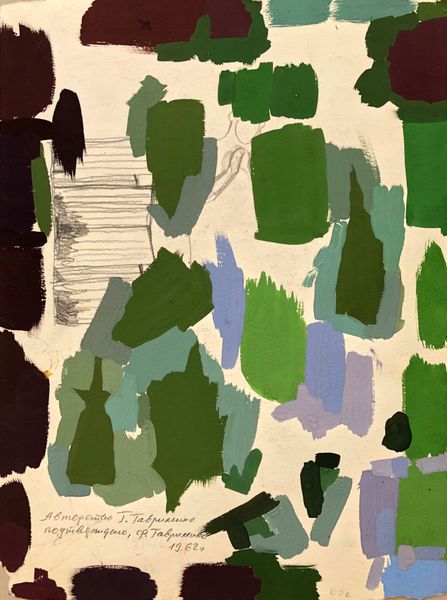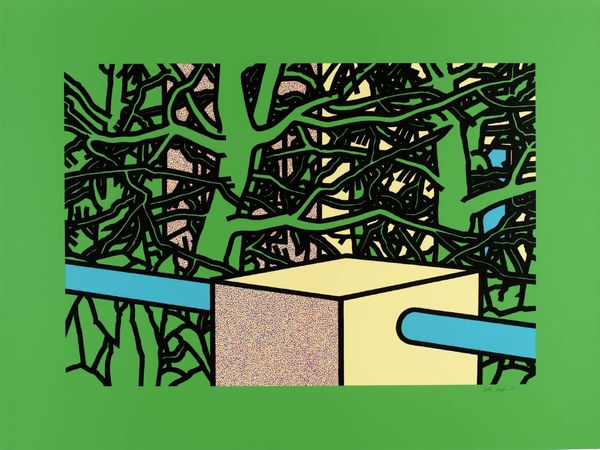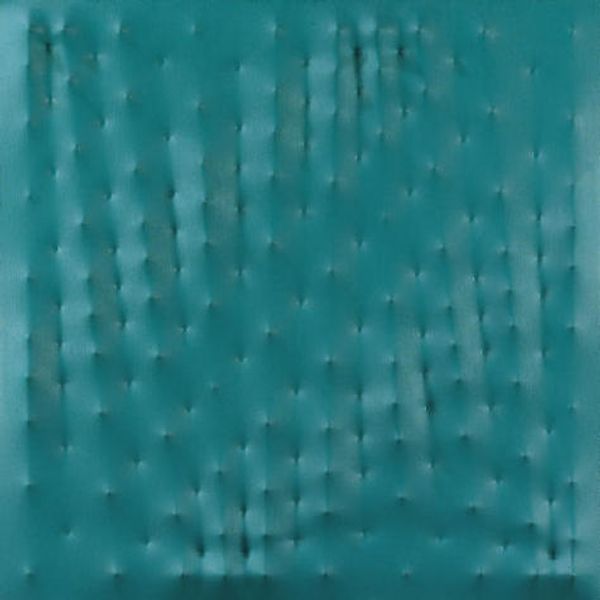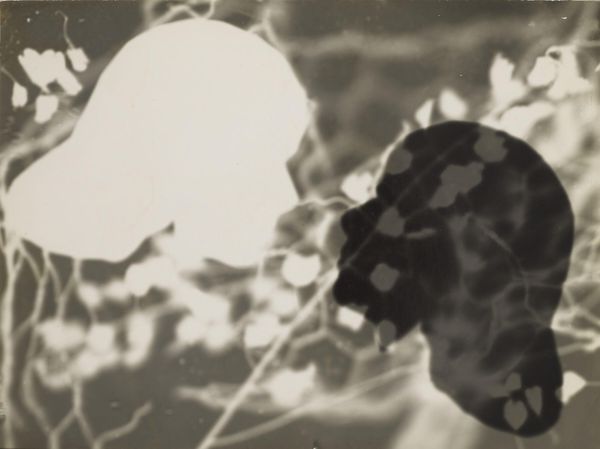
painting, acrylic-paint
#
organic
#
abstract painting
#
water colours
#
painting
#
acrylic-paint
#
acrylic on canvas
#
abstraction
#
modernism
Copyright: Victor Pasmore,Fair Use
Editor: We're looking at Victor Pasmore's "The Green Earth," created in 1980 with acrylic paint. It's currently housed here at the Tate Modern. My first impression is a sense of playful tranquility – these green shapes feel organic and inviting. How do you interpret this work? Curator: Well, considering Pasmore’s trajectory and the historical context, I see "The Green Earth" as part of a larger societal shift. Remember, post-war Britain saw a real embrace of abstraction as a utopian ideal, linked to modernist architecture and urban planning. Editor: Interesting, like a fresh start visualized? Curator: Precisely! Pasmore, initially a social realist painter, moved towards abstraction. He saw it as a way to connect art with everyday life. Do you notice how the composition invites you in with those soft shapes? Editor: I do. The overlapping forms create a sense of depth. Curator: Yes, and the title itself, "The Green Earth," positions it within a broader conversation about our relationship with nature, particularly relevant in an increasingly industrialized world. We might ask ourselves: how does abstraction serve as a language for representing environmental concerns? Editor: I see what you mean! It is almost a garden layout, like plans for idealized natural forms, presented on canvas instead of landscape. Curator: Exactly. Pasmore even worked on public art projects, further blurring the lines between the gallery space and the public realm. Understanding that context is key to understanding this painting's significance. Editor: That's given me so much to think about regarding the connection between abstraction and broader cultural values. Thanks. Curator: It highlights how art can reflect and shape society's aspirations and anxieties. A fruitful discussion, indeed.
Comments
No comments
Be the first to comment and join the conversation on the ultimate creative platform.
